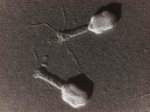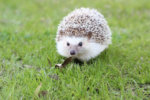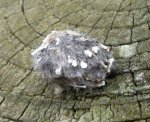Experiment Monday

Growing Your Own Crystals
Crystals are materials with unique scientific properties, and they’re manufactured and studied in many branches of science: geology, biology, even technology! Scientist Catherine shows how you can make your own crystals at home out of sugar and salt!

Exothermic Lizards
Lizards are exothermic (or “cold-blooded”), meaning their body relies on external sources of heat like the sun or heat-lamps. But how hot and cold do these lizards actually get throughout the day? To answer this question, Ellen is joined by her pet lizard: an Egyptian Uromastyx named Artemis!

Kitchen Chemistry – Acids & Bases
Join Scientist Susan as she shows you how to make your own indicator dye with red cabbage: a color-changing dye that reveals whether a liquid is an acid or a base!

Bacteriophage
Bacteriophage (literally “bacteria eaters”) are viruses that infect and fight pathogenic bacteria, a.k.a. the “bad bacteria” that’s harmful to our bodies. Scientist Julia discusses the function and shape of bacteriophages, and demonstrates how to craft your own model from clay!

Hedgehogs: Speedy or Slow?
How fast does a hedgehog actually run? Ellen tests the speed of her hedgehog Lily to determine if they’re actually as super-sonic as movies and video games say they are!

Fingerprints – Part 1
Did you know that every fingerprint is completely unique? Forensic scientist Michelle shows you how to observe your own fingerprints and identify their patterns!

Fingerprints – Part 2
How do forensic scientists find fingerprints at the crime scene, and how do they identify them? Forensic scientist Michelle shows you how to dust for “invisible” latent fingerprints, which you leave on nearly everything you touch!

Yeast and Sugar
What type of sweetener does yeast like best? Scientist Sarah conducts an experiment to find out! Follow along as she tests how yeast responds to sugar versus honey.

Dissecting an Owl Pellet
What is an owl pellet and what’s inside? Join Scientist Jess as she dissects a real owl pellet and identifies its contents!

Sleepy Cats
How much do cats actually sleep in a day? Scientist Esther is determined to find out! Follow along as she conducts her experiment on cat behavior and sleeping.

Slime
Follow along as scientist Zé leads us through an experiment about SLIME! How can we make the BOUNCIEST or STRETCHIEST slime?
STEM Chats

Veganism
Zé is a scientist and a vegan! In this video, he chats with fellow scientist Alexie about what a vegan diet is, its impacts on health, and its benefits for the environment.

The Science of Rainbows
Renee is a physicist who studied atmospheric optics – the science of how light interacts with particles in the sky, including the study of rainbows! Renee and Evelyn discuss rainbows, double rainbows, sundogs, and moonbows!

Indoor Cats vs. Outdoor Cats
Riley is an indoor cat, which has benefits for both for her health and for local wildlife! Emily and Gauri discuss the impacts of indoor cats vs. outdoor cats, and ways to keep your feline happy and entertained indoors!

Geology
Rocks are like Earth’s storytellers: through their structures and compositions, they reveal what happened thousands, millions, and even BILLIONS of years ago! Geologists Sarah and Jabari discuss the importance of rocks for learning about Earth’s history, and show off some of their favorite rock samples!

Biomedical Engineering
Did you know that not all engineers build bridges or cars? Some build electrical circuits, software programs, or even artificial lungs! Scientist Cortney chats with biomedical engineer Jonathan about his work with building and testing synthetic organs.

The Science of Maple Syrup
Have you ever wondered how maple syrup is made? Scientist Zachary explains the science of syrup and shows how he makes his own at home!

Encryption
In this installment of our STEM Chats series, scientists Esther and Thomas chat about data encryption and cyber security.

Healthy Eating
In this installment of our STEM Chats series, scientists Reema and Emily chat about healthy eating and lifestyle choices.

Oceans, Seafood, and Sustainability
In this installment of our STEM Chats series, scientists Esther and Simone chat about our oceans, seafood, and sustainable food sourcing!
Ask a Scientist

Stars
Our galaxy is filled with over 250 BILLION stars, including our sun! Join Viviana as she learns all about stars and galaxies from scientist Edmarie.

Plant Fossils
Did you know what plants can leave behind fossils too? In this Ask a Scientist video, student Hazel chats with Dr. Kristin, a scientist with a PhD in botany (the science of plants). Dr. Kristin specifically studied paleoecology: plant fossils!

Slime
In this “Ask a Scientist” video, Ella (a student from Beverly, Massachusetts) chats with Erin (Science from Scientists instructor and chemist) about the the science of slime. Learn about different types of slime, how slime is a non-Newtonian liquid, and how to keep your slime stretchy and gooey!

Coronavirus
In this “Ask a Scientist” video, Omeed (a student from California) chats with Samira (Science from Scientists instructor) about the coronavirus (COVID-19), how it’s affecting day-to-day life, and tips for staying healthy!

¡Salud pública!
En este “Pregúntale a un Científico” vídeo, Leonor (una estudiante de Alabama) habla con Edmarie (instructora de Science from Scientists de Massachusetts) sobre salud pública!

Neuroscience (Brains)
In this “Ask a Scientist” video, Juliette (a student from Milton) chats with Jennifer (SfS Instructor & neuroscientist from Massachusetts) all about the human brain!

Forensic Science
In this “Ask a Scientist” video, Andrew (a student from Minnesota) chats with Michelle (SfS Instructor & forensic scientist from Minnesota) all about forensic science!

Bats
In this “Ask a Scientist” video, Navid (a student from California) chats with Cortney (SfS Instructor & bat researcher from Massachusetts) all about bats!

Cancer & Health
In this “Ask a Scientist” video, Mabel (2nd grader from Minnesota) chats with Samira (SfS Instructor & cancer researcher from California) about health and cancer.

Sharks
In this “Ask a Scientist” video, Henry (4th grader from Beverly, MA) chats with Simone (SfS Instructor & marine biologist from San Fransisco, CA) all about SHARKS!


